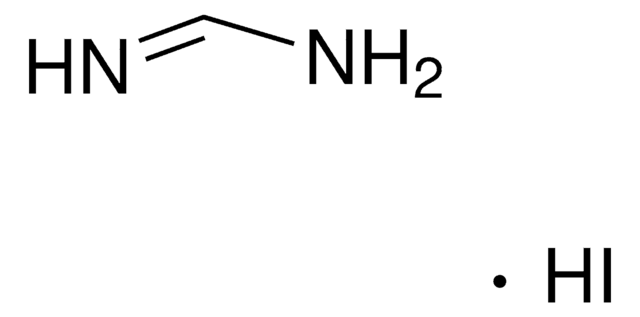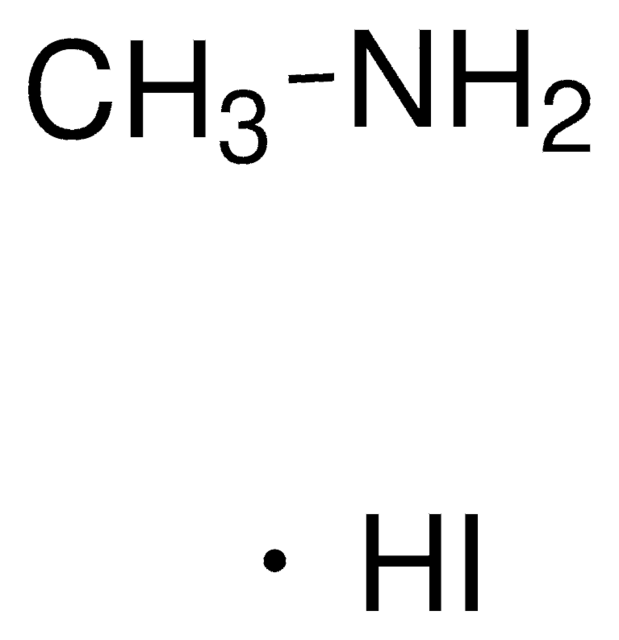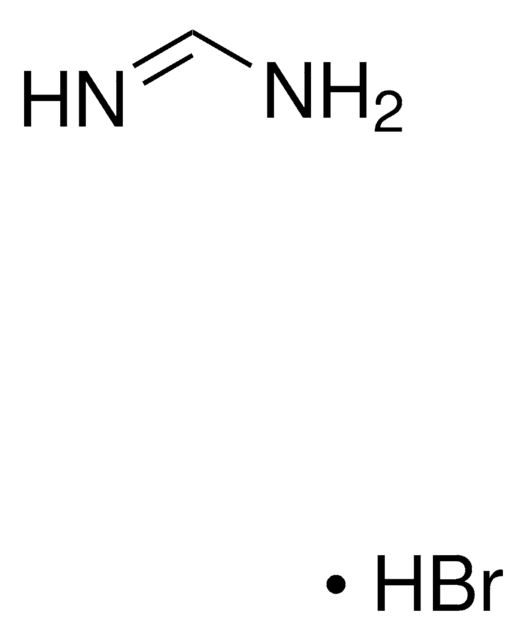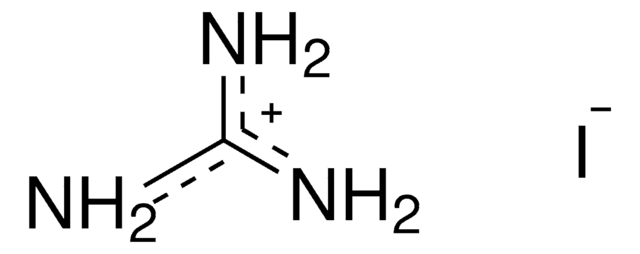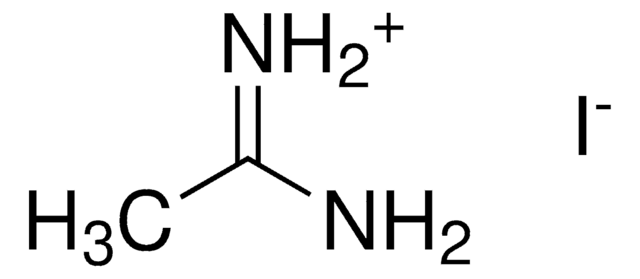806048
Formamidinium iodide
Sinônimo(s):
Greatcell Solar®, Iminomethylamine hydriodide, Methanimidamide iodide
About This Item
Produtos recomendados
descrição
Elemental Analysis: C ~7.0%
Elemental Analysis: N ~16.3%
Nível de qualidade
Ensaio
≥98% (H-NMR)
forma
powder
características do produto alternativo mais ecológico
Design for Energy Efficiency
Learn more about the Principles of Green Chemistry.
sustainability
Greener Alternative Product
pf
335 °C
categoria alternativa mais ecológica
, Enabling
cadeia de caracteres SMILES
[NH2+]=C([H])N.[I-]
InChI
1S/CH4N2.HI/c2-1-3;/h1H,(H3,2,3);1H
chave InChI
QHJPGANWSLEMTI-UHFFFAOYSA-N
Categorias relacionadas
Descrição geral
Aplicação
Informações legais
Greatcell Solar® is a registered trademark of Greatcell Solar Materials Pty Ltd
Código de classe de armazenamento
11 - Combustible Solids
Classe de risco de água (WGK)
WGK 3
Ponto de fulgor (°F)
Not applicable
Ponto de fulgor (°C)
Not applicable
Escolha uma das versões mais recentes:
Já possui este produto?
Encontre a documentação dos produtos que você adquiriu recentemente na biblioteca de documentos.
Os clientes também visualizaram
Artigos
Next generation solar cells have the potential to achieve conversion efficiencies beyond the Shockley-Queisser (S-Q) limit while also significantly lowering production costs.
Dr. Perini and Professor Correa-Baena discuss the latest research and effort to obtain higher performance and stability of perovskite materials.
For several decades, the need for an environmentally sustainable and commercially viable source of energy has driven extensive research aimed at achieving high efficiency power generation systems that can be manufactured at low cost.
Nossa equipe de cientistas tem experiência em todas as áreas de pesquisa, incluindo Life Sciences, ciência de materiais, síntese química, cromatografia, química analítica e muitas outras.
Entre em contato com a assistência técnica
